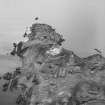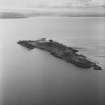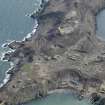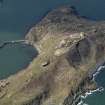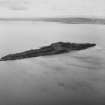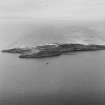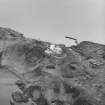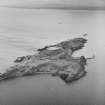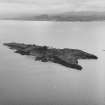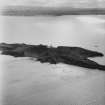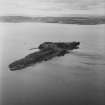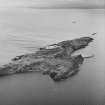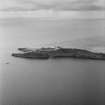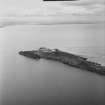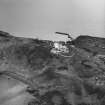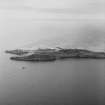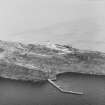Pricing Change
New pricing for orders of material from this site will come into place shortly. Charges for supply of digital images, digitisation on demand, prints and licensing will be altered.
Inchkeith, New Lighthouse
Lighthouse (19th Century)
Site Name Inchkeith, New Lighthouse
Classification Lighthouse (19th Century)
Alternative Name(s) Outer Forth Estuary; Inchkeith Lighthouse; Inchkeith, Summit Lighthouse
Canmore ID 52872
Site Number NT28SE 6
NGR NT 29296 82877
Datum OSGB36 - NGR
Permalink http://canmore.org.uk/site/52872
- Council Fife
- Parish Kinghorn
- Former Region Fife
- Former District Kirkcaldy
- Former County Fife
NT28SE 6.00 29296 82877
Inchkeith Lighthouse [NAT]
OS 1:10,000 map, 1982.
NT28SE 6.01 NT 29304 82846 Houses (Coastguard Quarters)
For (predecessor) Old Lighthouse (NT 29337 82790), see NT28SE 7.
For (presumably-associated) North Foghorn and Beacon (on East Stell, at NT 29211 83232), see NT28SE 13.
Non-Guardianship Sites Plan Collection, DC23941- DC23940, 1865, 1888, 1895- 1897, 1953 & 1975.
1890's optic unit from lighthouse is held by National Museums of Scotland.
(Undated) information in NMRS.
A lighthouse, founded on the 1st May 1803 and lit on 14th September 1804, Thomas Smith being the engineer.
OS Name Book 1853.
The present lighthouse on Inchkeith was erected by Thomas Smith in 1804 within the N angle of the artillery fortification NT28SE 1. The light originally fitted was of the reflecting type, incorporated reflectors of copper coated with silver (instead of the normal mirror-glass) and burnt spermaceti oil in an Argand burner (instead of whale oil in a 'common lamp'). The building itself was 'in the most substantial manner... like the buildings of a permanent National Establishment', the tower being of ashlar masonry with a metal-framed lantern. A dwelling-house was provided for the keepers and their families, and the lead roof was protected by a parapet wall on account of its exposed situation. The whole structure cost #5000, five times the cost of its predecessor.
A dioptric light on the Fresnel system was installed on 1 October 1835, the first such in Britain and a local wonder. A foghorn was installed in 1899 and an incandescent oil burner in 1904, while in the 1920's Inchkeith was one of the experimental stations for a programme of 'wireless fog signals'.
R W Munro 1979.
Name: Inchkeith (1803-4)
Location: N56 2 W3 0 Firth of Forth, 5 miles N of Leith
Designed: Thomas Smith
Built: Robert Stevenson
Light first exhibited: 14 September 1804
Description: circular stone tower, rising from square accommodation
Height of light above MHW: 220ft (67m)
Height of tower: 45ft (14m)
Light source and characteristics: W Fl (1) ev 15 secs. Electricity, sealed beam lamps: 269,280 cp: 22nm nominal range
Fog warning apparatus: Horn (2) ev 60 secs
Manning: unwatched (automatic since July 1986), monitored from Northern Lighthouse Board HQ, Edinburgh
Robert Stevenson's first tower. Revolving light installed February 1815
C Nicholson 1995.
Inchkeith Lighthouse [NAT]
OS (GIS) MasterMap, January 2011.
Project (2007)
This project was undertaken to input site information listed in 'Civil engineering heritage: Scotland - Lowlands and Borders' by R Paxton and J Shipway, 2007.
Publication Account (2007)
In the 18th century the island of Inchkeith was a notorious hazard to ships in the Forth. After the Aberdeen was
wrecked nearby in 1801, the Northern Lighthouse Board decided to build a lighthouse there. This was the first lighthouse for which Robert Stevenson was solely responsible under Edinburgh lamp manufacturer and Northern Lighthouse Board Engineer, Thomas Smith, whom he succeeded in 1808. It is 62 ft tall and of high-quality masonry in a fashionable architectural style. The foundation stone was laid in May 1803 and the work completed in September 1804, with Argand lamps and state-of-the-art silvered copper reflectors developed by Stevenson. The convenience of the lighthouse location to the Board’s headquarters facilitated numerous lighting innovations.
In 1786 a new form of reflector oil lamp had been designed by Smith and first tried at Inchkeith. When the Isle of May fixed light became operational in 1816 Stevenson’s apparatus at Inchkeith was converted into one of the earliest flashing lights.
In 1835 Britain’s first dioptric light (using refraction through lenses) was installed at Inchkeith underAlan Stevenson’s direction. The 1804 reflecting apparatus was re-installed at Cape Spear, near St John’s, Newfoundland, where it remained in service until 1963 and is now preserved. In 1889 the Inchkeith light was upgraded by D. A. Stevenson and the 1835 apparatus was presented to the Industrial Museum of Scotland, Edinburgh.
R Paxton and J Shipway 2007
Reproduced from 'Civil Engineering heritage: Scotland - Lowlands and Borders' with kind permission from Thomas Telford Publishers.








































































































